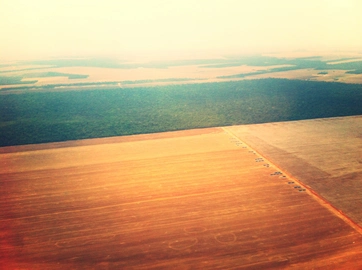Conservation opportunities and challenges in Brazil’s roadless and railroad-less areas
March 10, 2022.
A study conducted by researchers from the Federal University of Minas Gerais (UFMG – Brazil), the Federal University of Rio Grande do Sul (UFRGS – Brazil), and the Center for Development Research-University of Bonn (Germany), published as an article in the journal of Science Advances, has identified roadless and railroad-less areas in Brazil’s six biogeographical biomes (the Amazon, Atlantic Forest, Caatinga, Cerrado, Pantanal and Pampas).
The study has mapped where these road- and railroad-free areas overlap with important conservation areas, including conservation units, indigenous territories, maroon community lands and the country’s Priority Areas for Biodiversity Conservation. The authors show that only 39% of Brazil’s area is more than 5 km from highways, railways and other minor roads while 71% is more than 1 km away. These 1 km and 5 km distances had already been identified by past scientific studies as the thresholds for the occurrence of road impacts.
The study’s analyses show that the probability of encountering native vegetation increases with the distance from transportation infrastructure in different regions of the country. Moreover, the probability of finding native vegetation is far greater in protected areas. Brazil’s roadless and railroad-less areas contain more than 80% of the remaining native vegetation in the country, but only 38% of this area is protected. The average size, shape, and connectivity of these areas vary markedly from biome to biome, while all but the Amazon biome have more unprotected road- and railroad-free areas than protected areas.
Many of these unprotected roadless and railroad-less areas are found in designated Priority Areas for Biodiversity Conservation, a key tool in Brazil’s environmental policy framework that the federal government’s Ministry of the Environment created to use towards achieving the Convention on Biological Diversity’s Aichi Biodiversity Targets 2, 7, 11, 14 and 15. These Priority Areas are also part of Brazil’s national plan to achieve the UN Sustainable Development Goals, especially SDG 15. By mapping the protected and unprotected roadless and railroad-less areas within these Priority Areas, as well as those with or without remaining native vegetation, this study spatially identifies potential opportunities for conservation and restoration action in each of Brazil’s six biomes.
The study highlights three different trends for Brazil’s six biomes: First, the Amazon and the Pantanal, two unique biomes that are both of high international importance, have expansive roadless areas with plenty of native vegetation that cover a large part of these biomes’ areas. They would, if conserved, substantially contribute to achieving national conservation goals and should therefore be avoided in the implementation of new transportation infrastructure projects.
The second identified trend points to areas in the Atlantic Forest and Pampas with an urgent need for prioritized conservation, as these biomes hold the smallest road- and railroad-free areas and the lowest overall coverage of these areas. Finally, the third trend includes the Cerrado and Caatinga, which hold intermediate scenarios, as there are few roadless and railroad-less area conservation options. However, the conservation of some of those areas –that are of notable size– would still contribute significantly to achieving both biome-level and national conservation goals.
Full article here: SCIENCE ADVANCES • 4 Mar 2022 • Vol 8, Issue 9 • DOI: 10.1126/sciadv.abi5548
More information about the main authors: Fernanda Z. Teixeira I Rodrigo A. A. Nóbrega I and Trevor Tisler ((ZEF)


